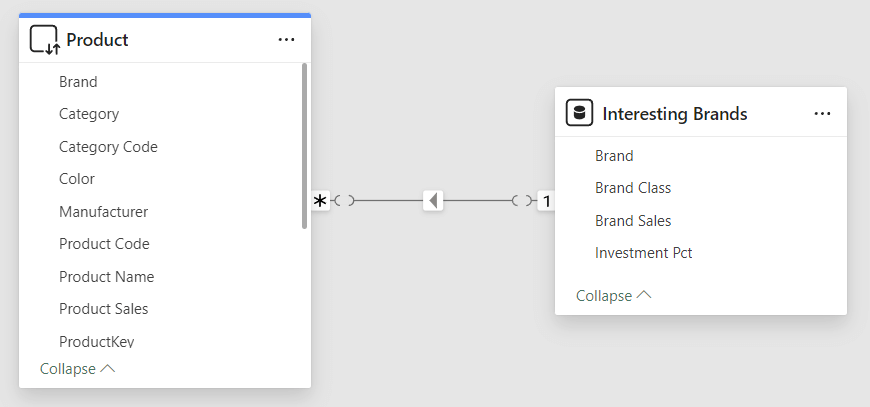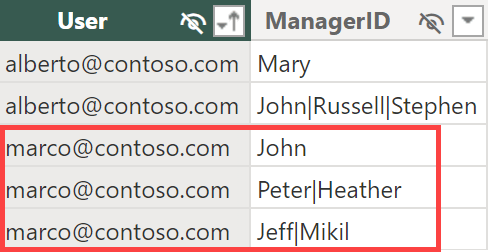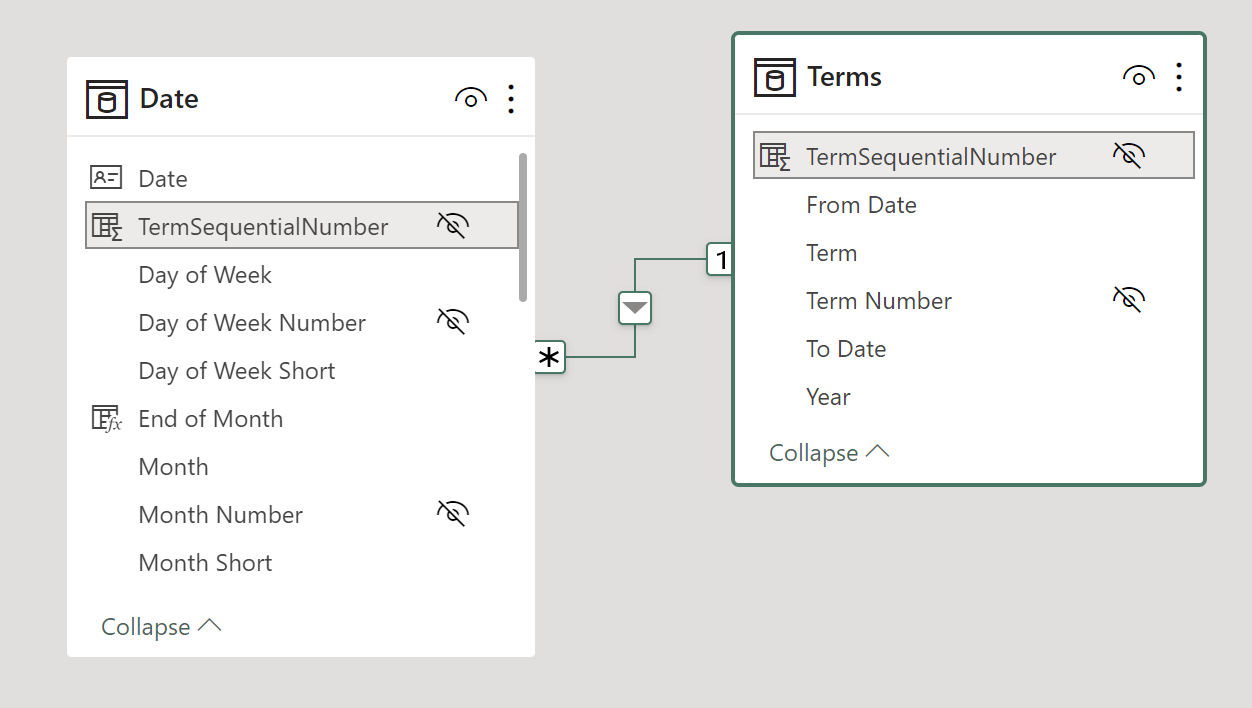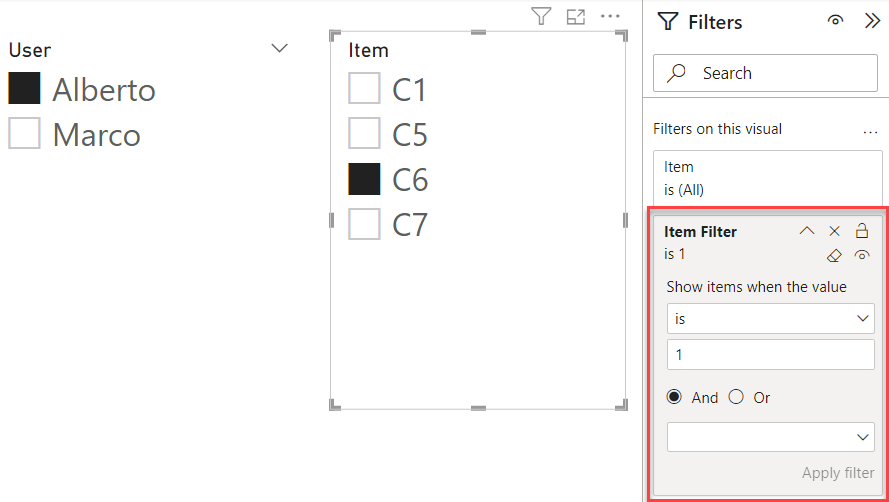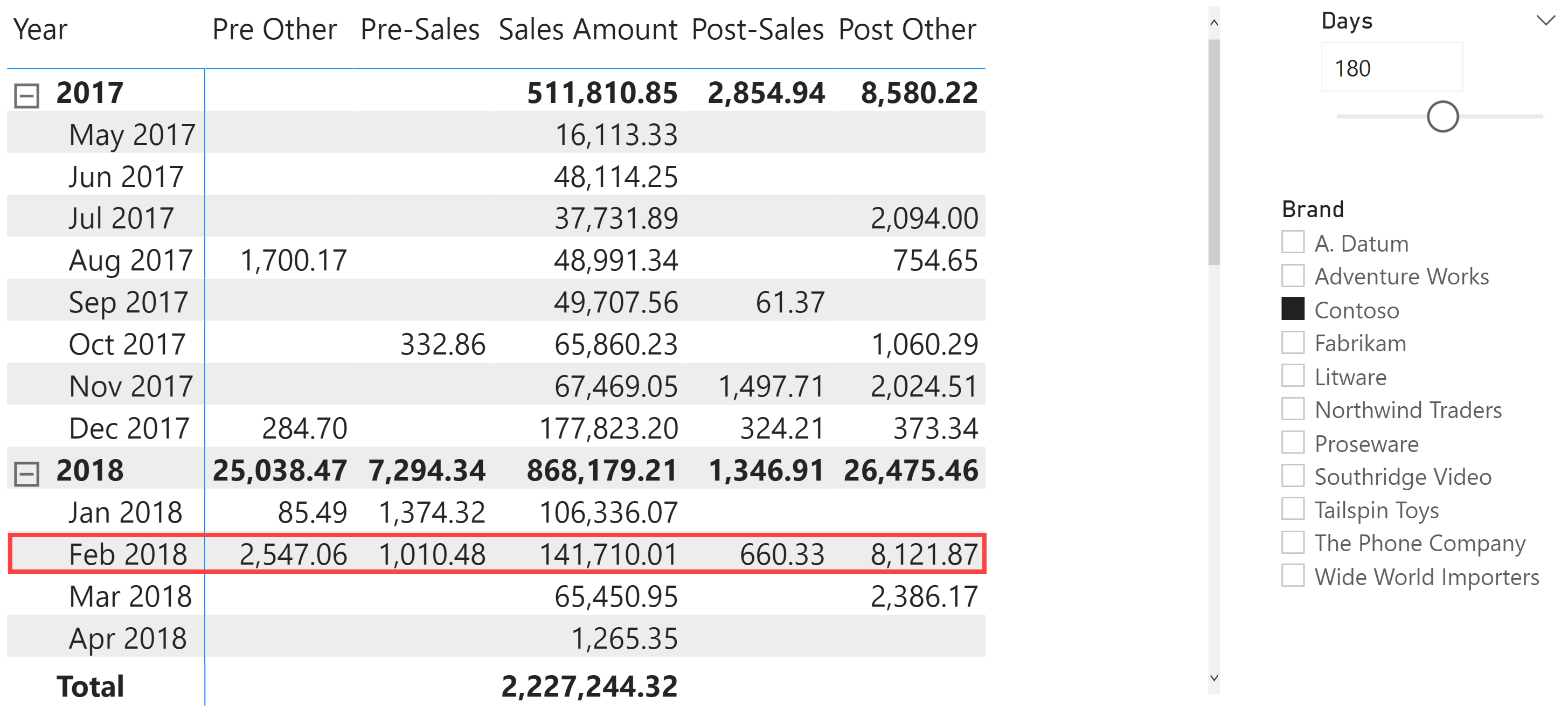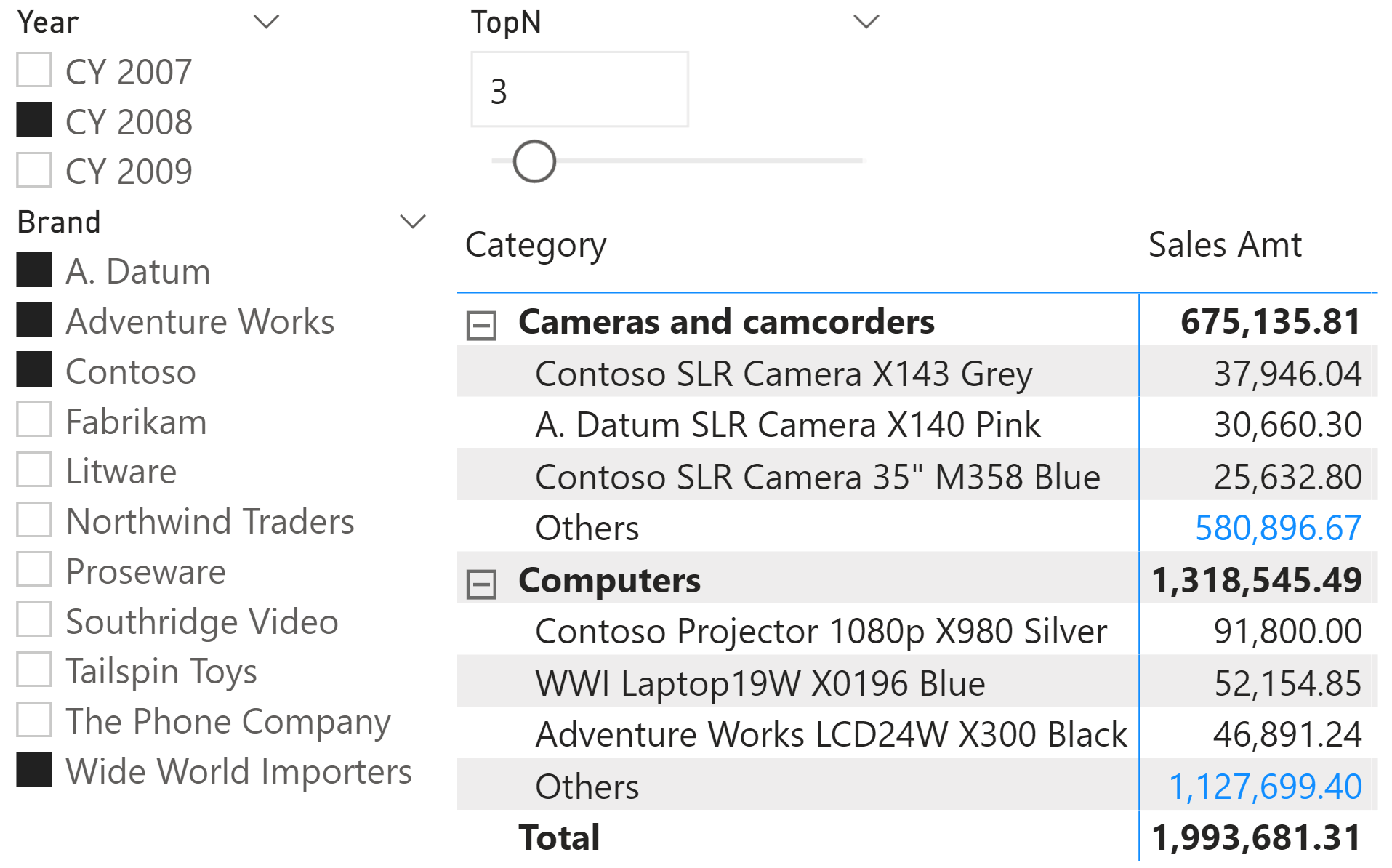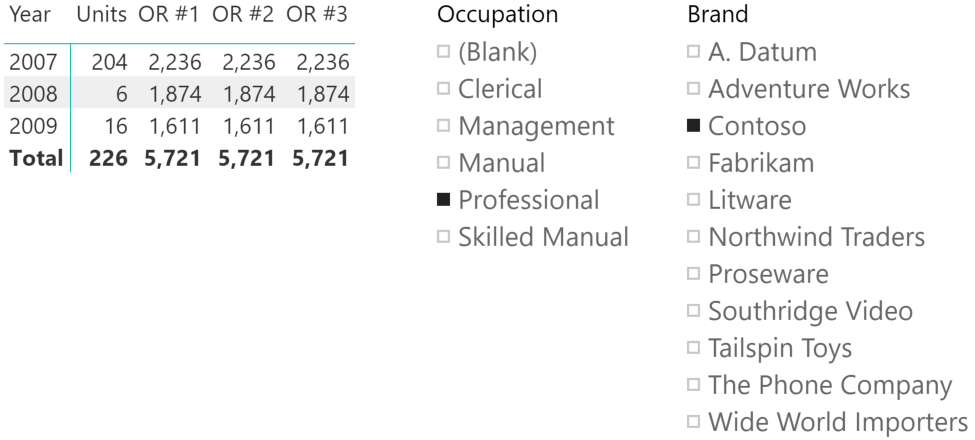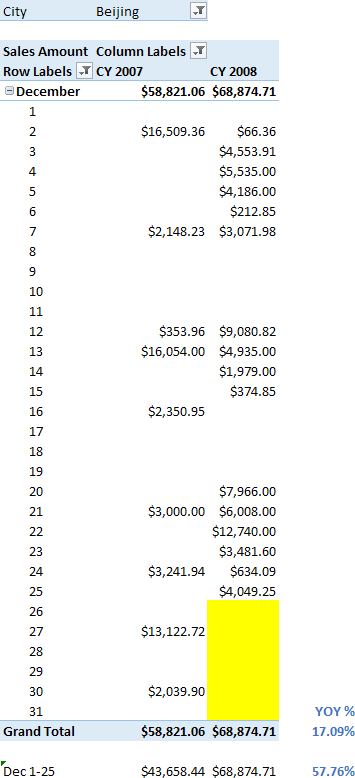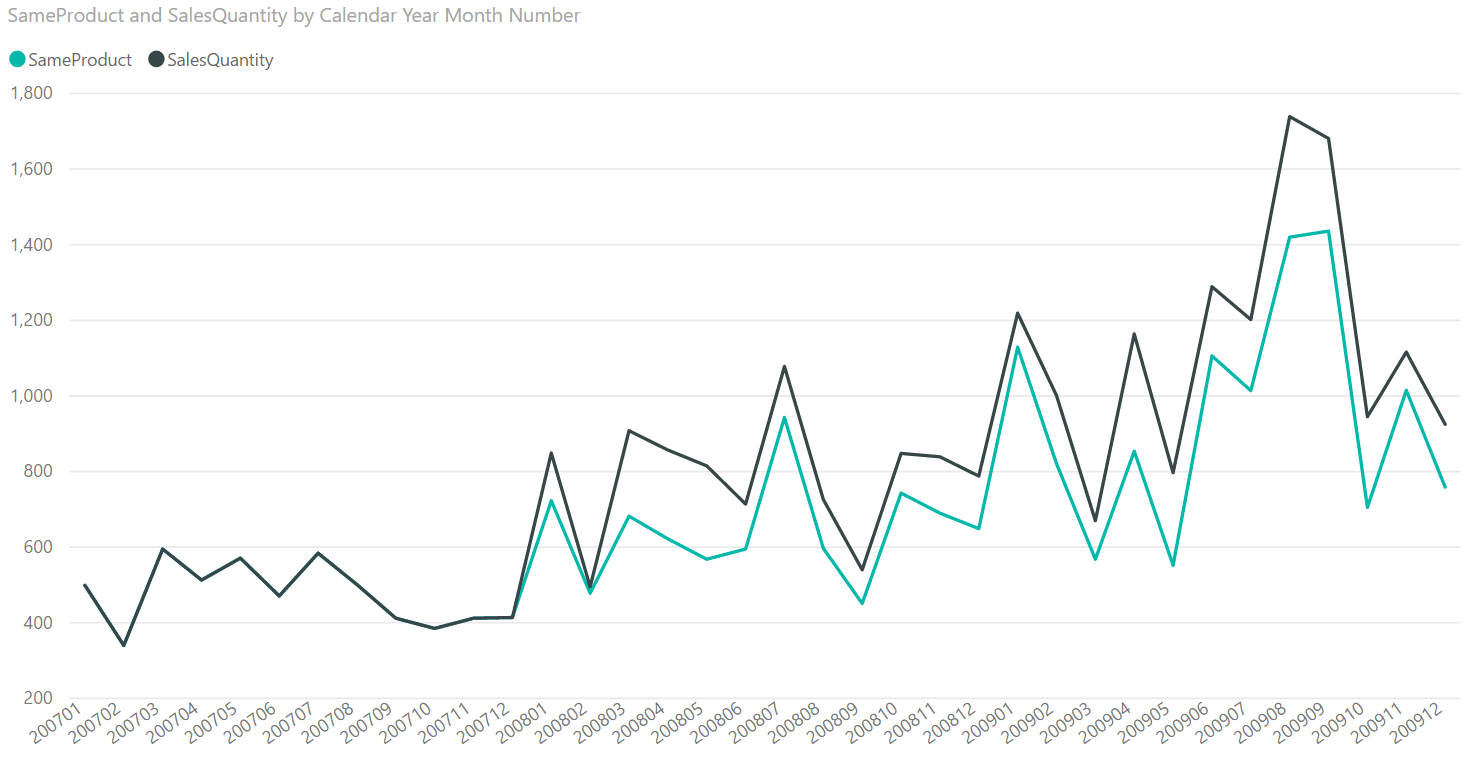Topic: Filter Context Manipulation
-
This article describes the differences between the ALL and CROSSFILTERED functions in DAX. Read more
-
This article describes how to apply dynamic security roles in a hierarchical organization to minimize the maintenance effort on the security configuration and obtain the best performance at query time. Read more
-
This article describes how to implement the comparison between school terms. The same technique can be applied to any arbitrary time periods that do not match regular months or quarters in a calendar, such as seasons or campaigns. Read more
-
When a slicer contains many items, developers can filter the most relevant items using another slicer. The scenario is easily solved with a many-to-many relationship if the source is a regular table. Still, it requires some DAX coding if the… Read more
-
This article shows how to manipulate the filter context to create a report with the sales made to a specific customer segment, before and after a selected month. Read more
-
This article shows an optimized DAX technique to display the first N products for each category in Power BI, adding a row that aggregates the value for all the other products. The companion video introduces the scenario and the general… Read more
-
This article describes how to implement in DAX a logical OR condition between the selection of two slicers of a Power BI report or of a PivotTable in Excel. By default, when relying on more than one slicer they are… Read more
-
This article introduces a technique to filter and productively compare two time periods with Power BI. Read more
-
If you do not have a full month with data, comparisons such as year-over-year (YOY) might require particular filters in order to do a like for like comparison in DAX. This article describes how to write DAX expressions comparing equivalent… Read more
-
This article shows a technique in DAX to compute the sales volume of products that were available right from the beginning of a selected time period, ignoring products introduced afterwards. Read more
